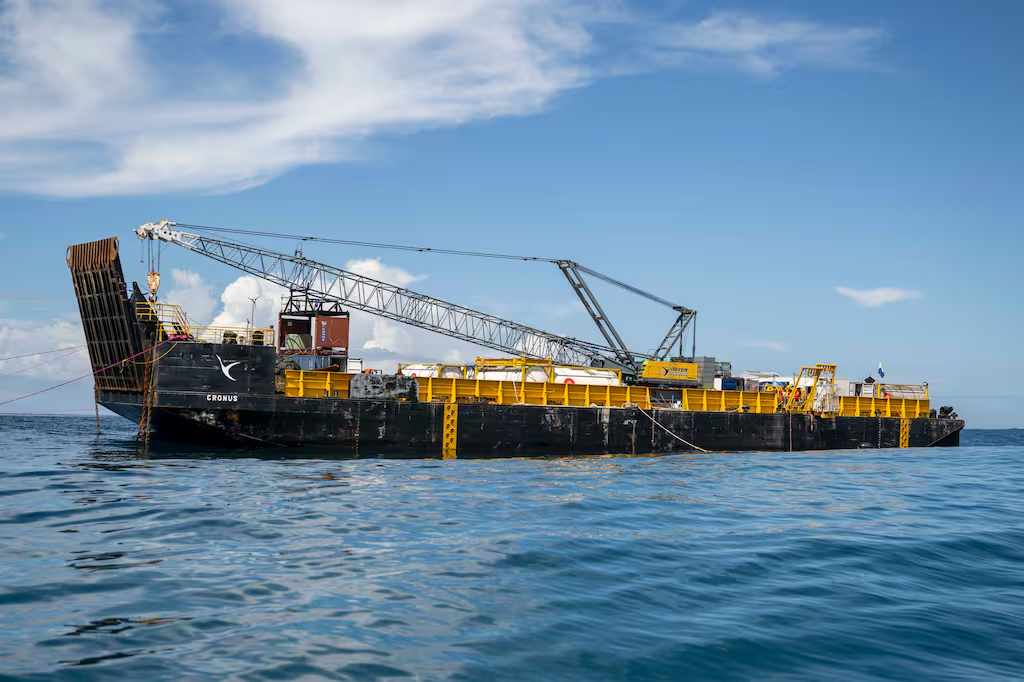Fuel recovery underway at wreck of HMNZS Manawanui

Fuel recovery from the wreck of the HMNZS Manawanui began today. (Source: NZDF)
The recovery of fuel from the wreck of the HMNZS Manawanui has begun off the coast of Samoa today.
The Navy vessel sank after it ran aground on a coral reef off the coast of Upolu and caught fire on October 6 last year. All 75 crew and passengers were safely evacuated.
An interim Court of Inquiry released on November 29 found that the direct cause of the grounding was determined to be a “series of human errors” which meant the ship’s autopilot was not disengaged when it should have been.
Remaining in autopilot resulted in the ship maintaining a course toward land until it grounded and stranded, the report read.
New Zealand salvage companies Pacific 7 Limited and Bay Underwater Services NZ Ltd have been tasked with the removal, recovery and disposal of fuel and other pollutants on board the vessel.

A large quantity of automotive gas, oil, and other pollutants held on board would take a “number of weeks” to remove, said NZDF senior national representative for Operation Resolution Commodore Andrew Brown.
“I can report the salvors’ divers have begun the process of extracting fuel and other pollutants from the ship and transferring it into tank-tainers on the barge. As always, progress is dependent on favourable sea and weather conditions which the salvors monitor daily.”
Brown said the barge would periodically return to Apia to offload and store the contents of the tanks while the Government worked through the disposal processes.
“This stage of the fuel removal process is complex and technical and it is extremely important we do a careful and thorough job. While the salvors’ fuel recovery work is progressing, our NZDF staff continue to support sea water sample collection and monitoring above and around the Manawanui.”










